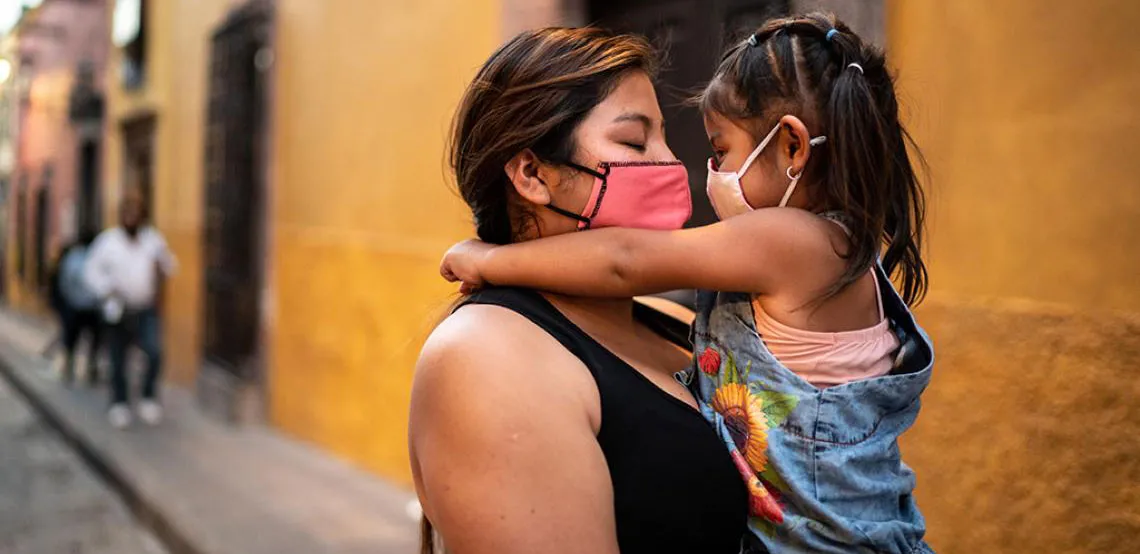Dr. José Narro Robles, the former Minister of Health of Mexico and the former head of Universidad Nacional Autónoma de México (UNAM), provided his unique perspective to the University of Arizona community on the state of public health in Mexico.
Narro gave a virtual seminar for Mexico Initiatives, co-sponsored by the Mel and Enid Zuckerman College of Public Health, Arizona International, and UNAM-Tucson Center for Mexican Studies. The event was simultaneously interpreted from Spanish to English to provide the most access possible to the community.
Mexico has seen enormous advances in its overall quality of public health in the last 50 years. The infant mortality rate decreased by nearly 85 percent. Life expectancy at birth rose 15 years. Most of Mexico’s health infrastructure was developed in these years. In 1980, there 7,938 medical units; in 2018, that number increased to 23,848.
However, Mexico still has a long way to go toward a healthy public infrastructure, according to Narro.
In the last 40 years, the state of Mexico’s urgent health crises shifted dramatically from infections and parasitic diseases to non-communicable diseases. According to the Institute of Global Health Sciences, the top three causes of death in Mexico are non-communicable diseases: coronary heart disease, diabetes, and cancer. Between 1980 and 2019, Mexico experienced a 34 percent increase in mortality from cardiovascular diseases; a 71 percent increase in the rate of malignant tumors; and a 296 percent increase in the death rate from diabetes.
This nationwide shift from overall cases of infectious illness to non-communicable disease has increased the cost of health care tremendously, reallocating the medical need to treat short, sudden, and fast-resolving illness to treating long-term illness, in which prevention and control is the optimal response.
Unfortunately, Mexico’s public health institutions lack preventative health programs for non-communicable diseases. Instead, institutions focus on emergency services and curative care: fixing health issues that have already become a medical problem.
The transition away from Seguro Popular–a public health insurance that covered a wide range of medical services without co-pays–weakened existing preventative programs even further.
Seguro Popular, which was adopted in 2004, ran until Mexican President Andrés Manuel López Obrador’s (AMLO) administration replaced it with the Instituto de Salud para el Bienestar (INSABI) on January 1, 2020.
AMLO has been known to say that Seguro Popular was “ni es seguro, ni es popular” (“neither safe, nor popular”). AMLO’s vision of a new Mexican health system, was founded on universality of coverage. After 15 years of Seguro Popular, 16.2 million Mexicans still lacked coverage under the program.
INSABI was meant to curtail some of the problems plaguing Mexico’s public institutions of health; however, Narro pointed out that there was no clear transition in place to go from Seguro Popular to INSABI. Worse yet, the introduction of INSABI happened just ahead of Mexico’s first case of COVID-19 on February 27, 2020.
The COVID-19 pandemic exacerbated many of the structural problems that plagued Mexican public health institutions, like excessive personnel in some units with understaffing in others, shortage of trained medical personnel, high costs, bureaucratic procedures, and inequality in the provision of services.
According to the Institute for Global Health Sciences, in February 2021, Mexico was number one in deaths of COVID-19 health workers and third in overall number of deaths worldwide.
The proportion of deaths increases with the level of marginalization of the municipality where the patient lives.
The outcomes of COVID-19 are reproductions of the outcomes of the structural inequality that already exists in the fractured Mexican health care system, which is divided into public and private institutions.
Only 7.2% of Mexicans hold private insurance, yet health outcomes are far better for those treated at a private institution. An average of 20% of the patients served at private hospitals die from COVID-19, compared to the public programs, where depending on the public program, averages range from 37% to 50% or higher.
Narro remains hopeful for the future of public health in Mexico. He says that preventative and primary care must be favored over hospitalizations and curative medicine. Mexico must also increase public investment for health and provide truly universal coverage.
As Narro said, “Health is not everything, but without it there is almost nothing.”





